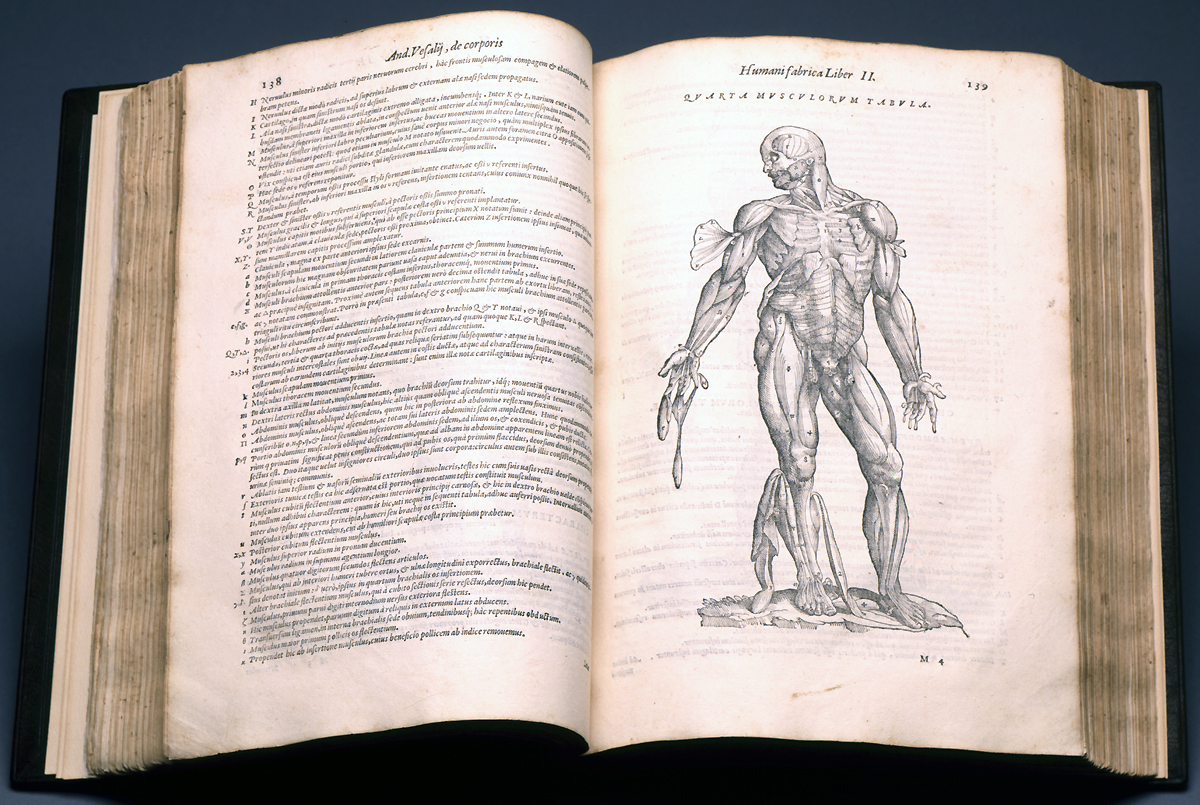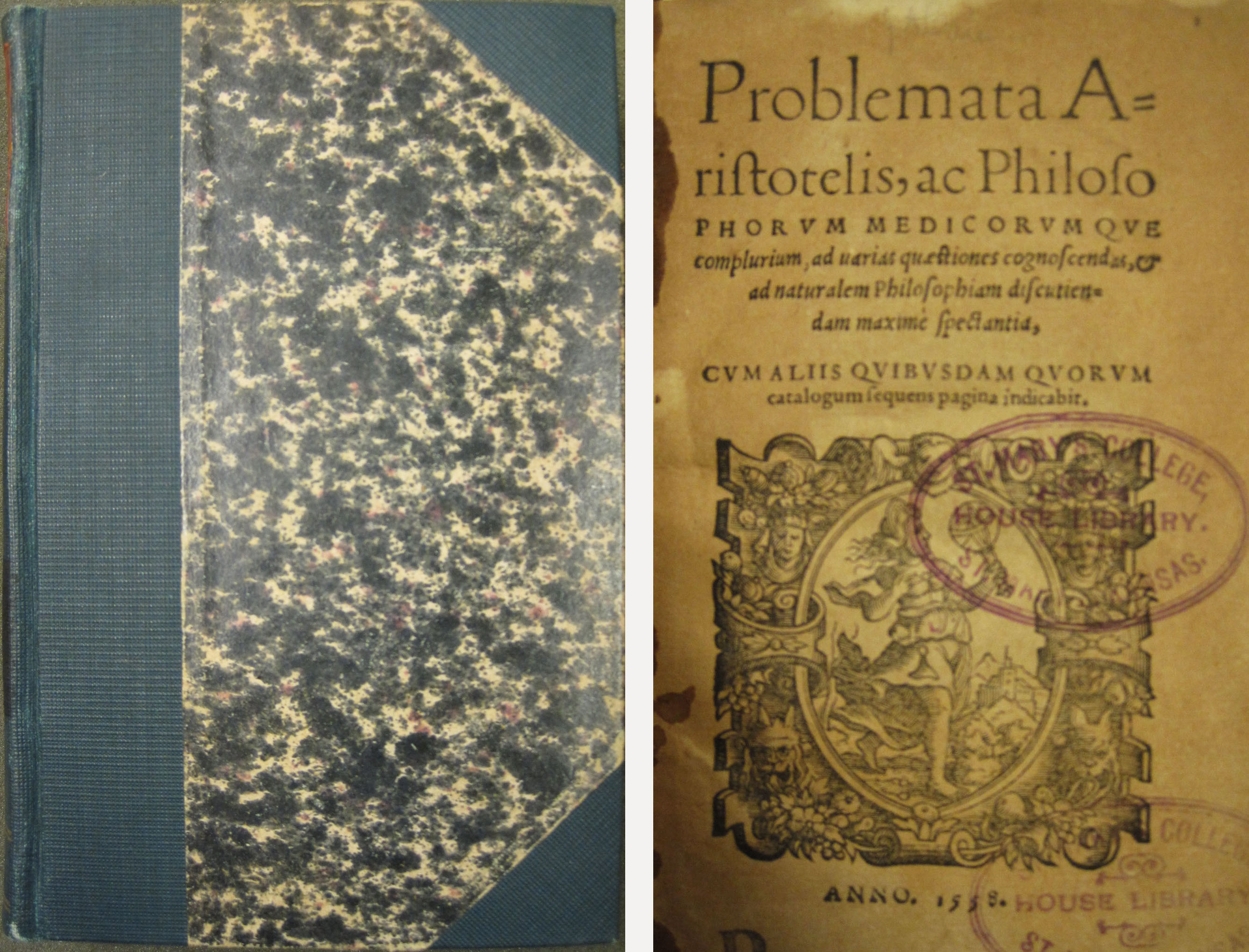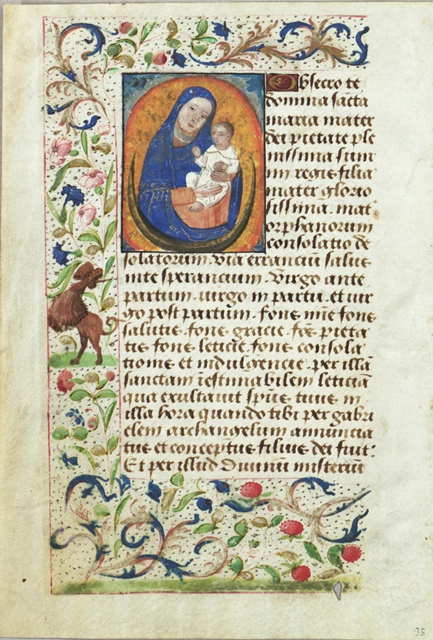A recent acquisition by Special Collections is now available for study in the Archives and Rare Books Reading Room (307) of Pius XII Library: the newly published English translation of De humani corporis fabrica by Andreas Vesalius (1514-1564), purchased through funding from the Center for Medieval and Renaissance Studies.
This two-volume, folio-size edition is an exciting work of monumental scholarship that will support the study of the history of medicine and supplement our own 1568 Venetian edition of the Fabrica, already part of the library’s collections in Rare Books. A result of collaboration between Northwestern professors Daniel H. Garrison, Dept. of Classics, and Malcolm H. Hast, Dept. of Otolaryngology, the new translation, which includes a detailed critical apparatus, creates unprecedented access to the Fabrica. Recognized as the first modern textbook of human anatomy, it was originally published by Oporinus in Basel in 1543 and revised as a second edition in 1555, during a time when the dissection of the human body was relatively new and culturally precarious. Vesalius lecturing about human dissection, from the 1555 edition of the Fabrica.
Amply illustrated with over 400 representations of human skeletons, musculature, and viscera, the Fabrica revolutionized anatomical instruction through its use of innovative woodcuts that incorporated direct observation of anatomy with Renaissance classicism and aesthetic sensibility, in order to mediate the shock of explicitly dismembered and deconstructed body parts.
The artist responsible for the Fabrica illustrations is unknown, although Vasari, in his 1568 Lives of the Most Excellent Painters, attributed them to Jan Stephen van Calcar, known to have worked with Vesalius on other projects. The level of mastery of the Fabrica illustration, however, has encouraged an alternative attribution to Titian, the preeminent painter of sixteenth-century Venice, but there is no documentation to support this claim beyond the quality of the images themselves, which are remarkable in both technical and semantic terms. The above illustration of the male abdomen, for example, transforms a dismembered and eviserated human body into the antique sculpture known as the Belvedere Torso, part of the pope’s collections of antiquities in the Cortile de Belvedere of the Vatican. The image of a human skeleton at the right transforms a descriptive anatomical illustration into a poetic momento mori, with its poignantly reflexive contemplation of mortality.
Regardless of their uncertain attribution, the woodcuts in the Fabrica play a major role in Vesalius’s arguments, supporting or correcting ancient medical texts, such as the works of Galen, which in the sixteenth century received renewed scholarly interest along with other Greek texts. As author, scientist and teacher, Vesalius recognized the potential of print to create a new form of textbook, one based on a relationship between text and image that could bring to life his research on the bodies of the dead. It is this methodological insight more than anything else that has established the Fabrica as a major monument in intellectual history as well as in the history of the printed book.
Because the year 2014 represents the 500th anniversary of the birth of Vesalius, there are preparations underway for conferences and exhibitions about him all over the world. A group of librarians and scholars of Washington University and Saint Louis University are organizing a Vesalius symposium in St. Louis for early 2015. The new translation of the Fabrica will undoubtedly encourage new areas of study and research in early modern medicine and illustrated texts.
For more information about this new acquisition, contact Debra Cashion, Vatican Film Library Assistant Librarian (314-977-5517, dcashion@slu.edu), or Jennifer Lowe, Rare Books Librarian (314-977-5070, jlowe3@slu.edu).

 by
by 






